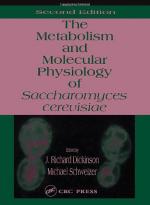|
This section contains 335 words (approx. 2 pages at 300 words per page) |
Unicellular Fungi (Yeast Phylum) are one of the most studied single-cell Eukaryotes. Among them, Saccharomyces cerevisiae is perhaps the biological model most utilized for decades in order for scientists to understand the molecular anatomy and physiology of eukaryotic cells, such as membrane and transmembrane receptors, cell cycle controls, and enzymes and proteins involved in signal transduction to the nucleus.
Many strands of S. cerevisiae are used by the wine and beer industry for fermentation. S. cerevisiae is a member of the group of budding yeasts that replicate (reproduce) through the formation of an outgrowth in the parental cell known as a bud. After nuclear division into two daughter nuclei, one nucleus migrates to the bud, which continues to grow until it breaks off to form an independent daughter cell. Most eukaryotic cells undergo symmetric cell division, resulting in two daughter cells with the same size. In budding yeast, however, cell division is asymmetric and produces at cell separation a large parental cell and a small daughter cell. Moreover, after separation, the parental cell starts the production of a new bud, whereas the daughter cell continues to grow into its mature size before producing its own bud. Cell cycle times are also different between parental and young daughter cells. Parental (or mother cells) have a cell cycle of 100 minutes, whereas daughter cells in the growing process have a cycle time of 146 minutes from birth to first budding division.
The study of cell cycle controls, enzymatic systems of DNA repair, programmed cell death, and DNA mutations in S. cerevisiae and S. pombe greatly contributed to the understanding of pre-malignant cell transformations and the identification of genes involved in carcinogenesis. They constitute ideal biological models for these studies because they change the cellular shape in each phase of the cell cycle and in case of genetic mutation, the position defect is easily identified and related to the specific phase of the cell cycle. Such mutations are known as cdc mutations (cell division cycle mutations).
|
This section contains 335 words (approx. 2 pages at 300 words per page) |


